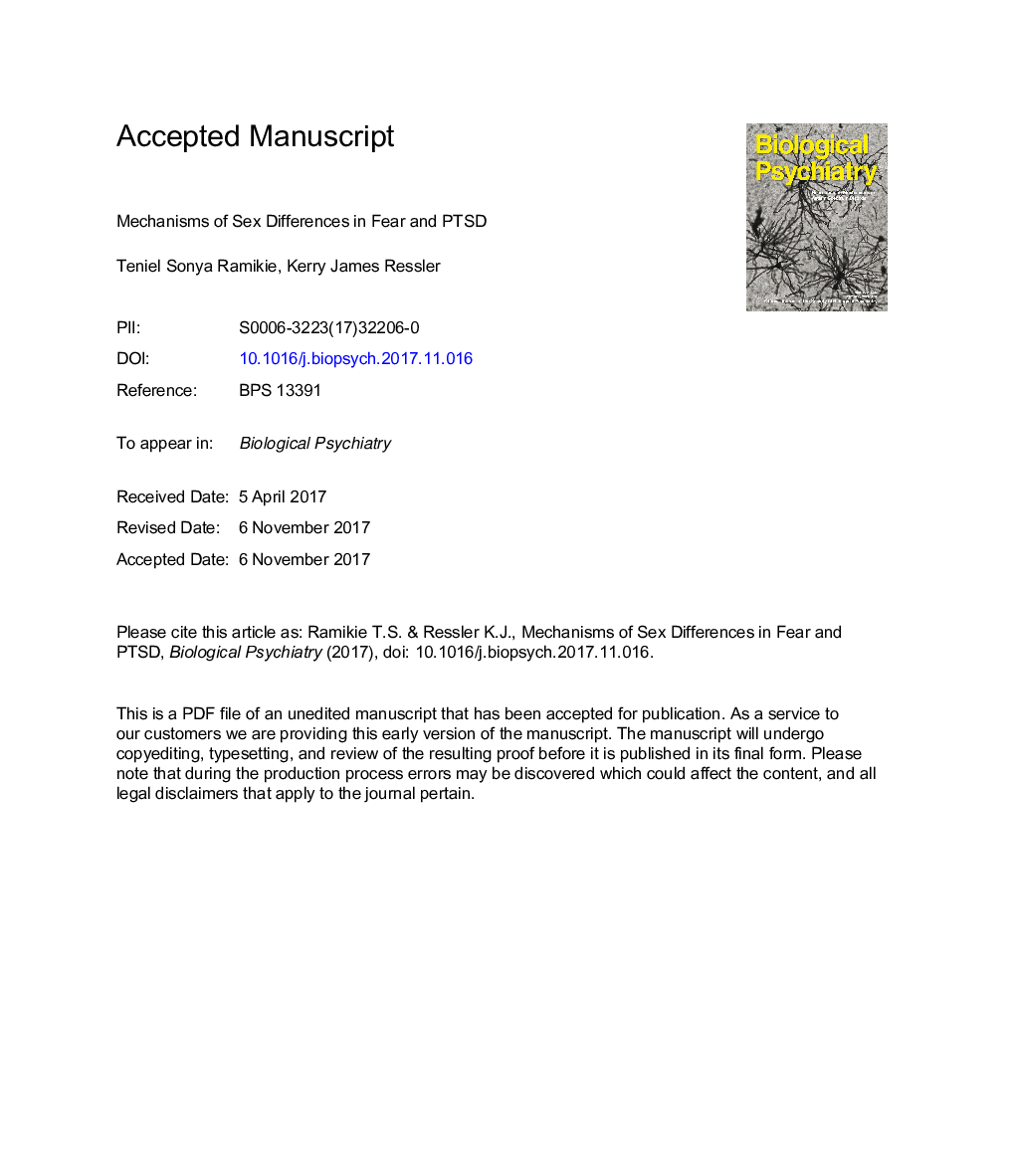| Article ID | Journal | Published Year | Pages | File Type |
|---|---|---|---|---|
| 8813992 | Biological Psychiatry | 2018 | 28 Pages |
Abstract
Following sexual maturity, females disproportionately have higher rates of posttraumatic stress disorder (PTSD) and experience greater symptom severity and chronicity as compared with males. This observation has led many to examine sex differences in PTSD risk factors. Though relatively few, these studies reveal that the root causes of PTSD sex differences are complex, and partly represent interactions between sex-specific nonbiological and biological risk factors, which differentially shape PTSD vulnerability. Moreover, these studies suggest that sex-specific PTSD vulnerability is partly regulated by sex differences in fear systems. Fear, which represents a highly conserved adaptive response to threatening environmental stimuli, becomes pathological in trauma- and stress-based psychiatric syndromes, such as PTSD. Over the last 30 years, considerable progress has been made in understanding normal and pathological molecular and behavioral fear processes in humans and animal models. Thus, fear mechanisms represent a tractable PTSD biomarker in the study of sex differences in fear. In this review, we discuss studies that examine nonbiological and biological sex differences that contribute to normal and pathological fear behaviors in humans and animal models. This, we hope, will shed greater light on the potential mechanisms that contribute to increased PTSD vulnerability in females.
Related Topics
Life Sciences
Neuroscience
Biological Psychiatry
Authors
Teniel Sonya Ramikie, Kerry J. Ressler,
